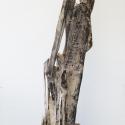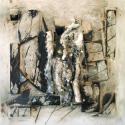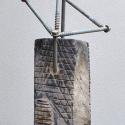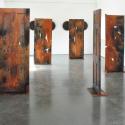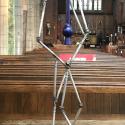Discipline
Abstract
Architectural / Monumental / Relief
Material
Brick/Concrete/Plaster
Found Objects
Mixed media
Steel
Wood
Region
London
Biography
Over the last 15 years Jonathan O’Dea has become known for developing the concept of deconstructed art, collecting objects, breaking them down and turning them into sculptures. Jonathan’s use of materials has also led to the growing interest and discussion around sustainably and art.
The term deconstruction was first coined by French philosopher Jacques Derrida in the 1970s, and was used as critical framework to analyse art. Derrida argues that there is not one single intrinsic meaning to be found in a work, but rather many, and often these can be conflicting.
In the last 15 years, Jonathan has reversed this narrative to inform the creation of physical artwork, turning the theory into practice.
Through his years of experimenting and research, Jonathan has created his own approach to producing sculptures, collecting recycled building materials, breaking them down and turning them into wall and floor-based sculptures. Jonathan’s unique approach to the use of materials is amplified by their source; identifying construction projects that have their own narrative or backstory. An example of these sources is the construction of the Olympic Park in East London, another is construction of Crossrail (The Queen Elizabeth Line). Jonathan use materials in his artwork is associated literally with regeneration, such as found objects from brownfield sites, recycled building materials, tools and other equipment.
Jonathan’s sourcing and use of materials also raises interesting questions around the subject of sustainability, a topic which has recently come into the discourses of art. Jonathan’s means of sourcing materials is a clever double approach to creating art in a suitable way. Most major construction projects have to have a clear approach to recycling waste materials, to avoid sending excess waste to landfill sites. By taking these recycled materials from construction sites Jonathan is able to create work that can safely say is 90% sustainable. Any introduction of new materials into Jonathan’s work is kept to a minimum.
Visually Jonathan’s work is minimalist in nature in the way he uses colour, but at the same time, complex in its physical form in the way he uses materials to construct his work. Jonathan’s technique renders the materials down to a point that creates ambiguity, where the viewer is left unsure how the artwork is constructed and the original nature of the materials.

